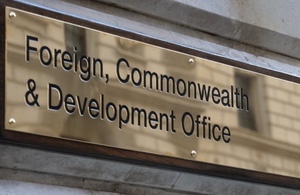Public Health England’s (PHE) seventh independent report on vaping in England, carried out by researchers at King’s College London, found that:
- nicotine vaping products were the most popular aid (27.2%) used by smokers trying to quit in England in 2020
- it is estimated that in 2017, more than 50,000 smokers stopped smoking with the aid of a vaping product who would otherwise have carried on smoking
- 38% of smokers in 2020 believed that vaping is as harmful as smoking – 15% believed that vaping is more harmful
- using a vaping product as part of a quit attempt in local stop smoking services had some of the highest quit success rates – between 59.7% and 74% in 2019 and 2020
The report takes an in-depth look at the latest evidence on the effectiveness of nicotine vaping products in helping people to stop smoking. The report also provides an update on the use of nicotine vaping products among young people and adults and examines the data on people’s perception of risk.
Coronavirus (COVID-19) is likely to have had an impact on smoking and vaping behaviours in both adults and young people. However, it is still too early to assess the full effect of the pandemic, with much of the data examined in this report being pre-pandemic.
In England in 2020, nicotine vaping products were the most popular aid used by smokers trying to quit, with 27.2% of smokers using a vaping product compared with 18.2% using nicotine replacement therapy (NRT) products (such as patches and gum) and 4.4% using the prescription medicine varenicline.
Evidence over the years suggests that as the use of vaping products in quit attempts increases, the number of successful quits in England also increases. It is estimated that in 2017, more than 50,000 smokers stopped smoking with the aid of a vaping product who would otherwise have carried on smoking. Data from systematic reviews since PHE’s 2018 report show that vaping products were significantly more effective for helping people stop smoking than NRT.
Those using a vaping product as part of their quit attempt in local, stop smoking services have some of the highest quit-success rates – between 59.7% and 74% in 2019 to 2020.
Vaping has plateaued in adults and young people since the last PHE report in March 2020.
Around 4.8% of young people (aged 11 to 18 years) reported vaping at least once a month – the same as last year – and most of these were either current or former smokers (only 0.8% of young people who had never smoked currently vape). Smoking prevalence among young people, including those who smoked sometimes or more than once a week, was 6.7% in March 2020, similar to March 2019, at 6.3%. The law bans the sale of smoking and vaping products to under 18s but age-of-sale violations are being reported.
Similar to last year, around 6% of adults are current vapers, equating to about 2.7 million adult vapers in England. Smoking prevalence continues to fall and is between 13.8% and 16% depending on the survey. Vaping prevalence was between 17.5% and 20.1% among current smokers, around 11% among former smokers and between 0.3% and 0.6% among those who have never smoked. The proportion of vapers who also smoke, or ‘dual users’, has declined since 2012.
There are still concerns around increasing misperception of the relative risk caused by vaping products, compared to smoked tobacco. In 2020, 38% of smokers believed that vaping is as harmful as smoking and 15% believed that vaping is more harmful. This is out of line with expert reviews from the UK and US, concluding that using regulated nicotine vaping products is far less harmful than smoking.
Professor John Newton, Director of Health Improvement at PHE, said:
Smoking is still the leading preventable cause of premature death and disease – killing almost 75,000 people in England in 2019. The best thing that a smoker can do is to stop smoking completely and the evidence shows that vaping is one of the most effective quit aids available, helping around 50,000 smokers quit a year.
Thousands more could have quit except for unfounded safety fears about e-cigarettes. The evidence has been clear for some time that, while not risk-free vaping is far less harmful than smoking.
For anyone who smokes, particularly those who have already tried other methods, we strongly recommend they try vaping and stop smoking – ideally with additional support from their local stop smoking service for the very best chance of quitting for good.
PHE’s advice remains that smokers should switch to vaping products to help them quit smoking, but non-smokers should not take up vaping. Vaping products contain significantly less harmful chemicals than cigarettes but are not without some risks.
PHE has commissioned a full review of the evidence on the safety of vaping products, which will be published next year in 2022. King’s College London is working with a number of different researchers from the UK and US (including some who contributed to the National Academies of Sciences, Engineering and Medicine’s e-cigarette report in in 2018) to conduct this review.
Professor Ann McNeill, Professor of Tobacco Addiction at King’s College London, and lead author of the report said:
Our report draws together findings from randomised controlled trials, stop smoking services and population studies and concludes that nicotine vaping products are an effective way of successfully quitting smoking.
What is concerning is that smokers, particularly those from disadvantaged groups, incorrectly and increasingly believe that vaping is as harmful as smoking. This is not true and means fewer smokers try vaping.
The goal for 2030 is to be smokefree in England. The development of a new Tobacco Control Plan and this year’s review of the Tobacco and Related Products Regulations 2016 is an opportunity to ensure that the regulations around vaping are appropriate. The regulations are also hoped to help smokers to quit, while not attracting people who have never smoked.
